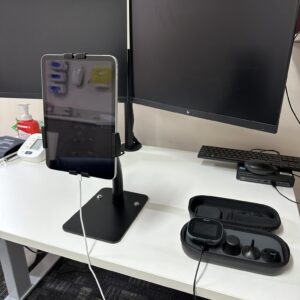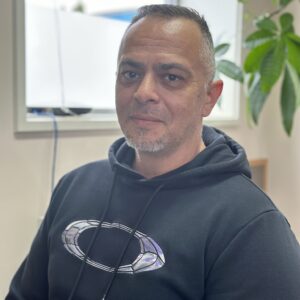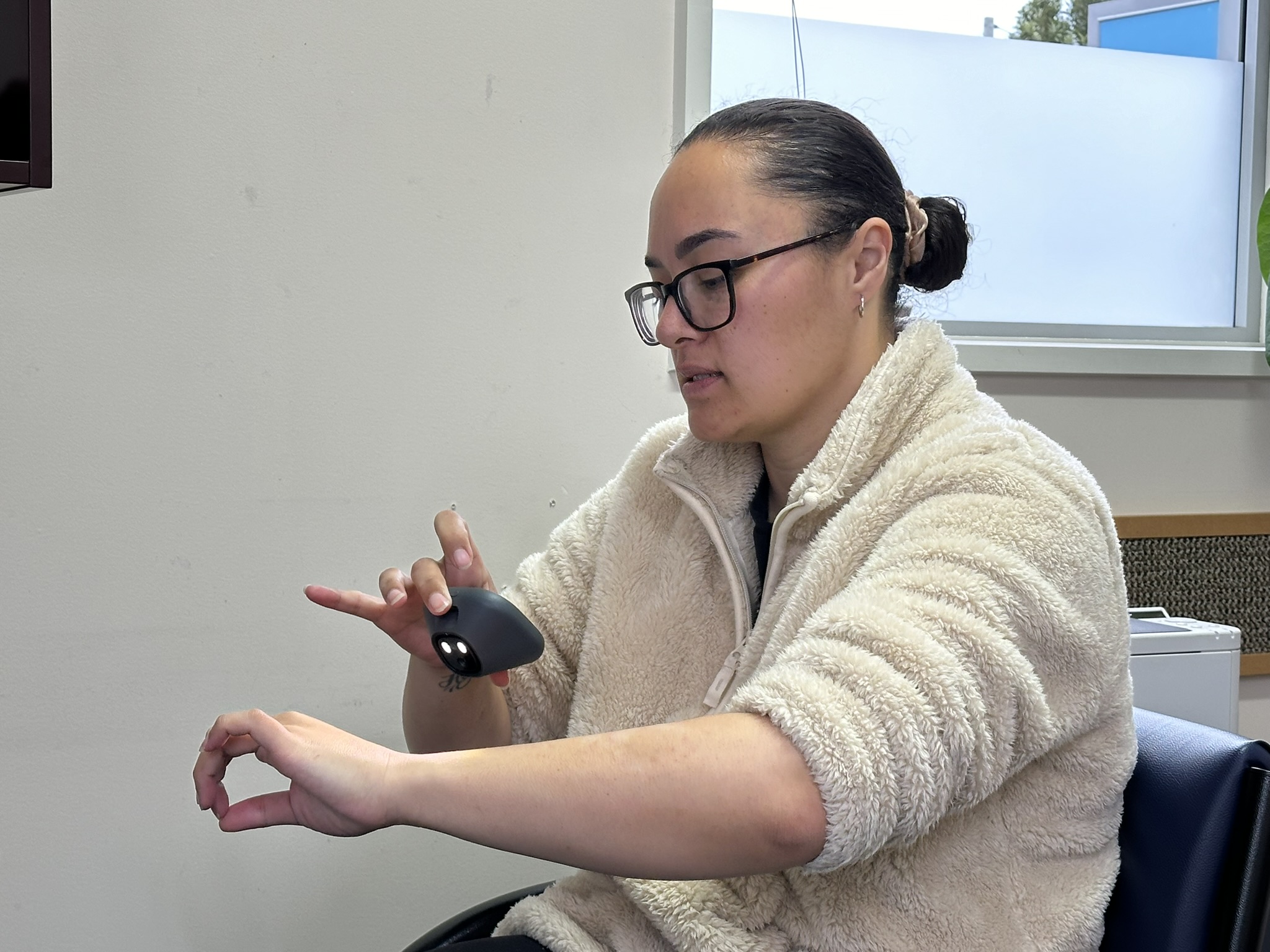Technology is playing a fantastic role in connecting us to friends, family and services when they can’t be close to home, and Tui Ora is embracing the revolution in health diagnostics equipment that gives patients a better experience when having an online GP consultation.
“Of course, a kanohi ki te kanohi (face to face) appointment is always the best option for both the doctor and the patient, but this technology is a very good alternative,” says Dr Bernard Leuthart, Tui Ora’s Pou Whakahaere Tākutatanga (Clinical Director), who is also known as Dr. B.
“It also enables the patient to play an active role in their consult, which people find very empowering.
“The response to using the equipment has been overwhelmingly positive from our whānau, especially those who were a bit worried about using it beforehand.”
The virtual consult takes place in a dedicated room at the Whaitara Health Centre, with the doctor and patient talking to each other via a screen. A high-quality digital camera with specialised attachments enables the doctor to examine ears and throats, look closely at a rash or other skin issue and take a patient’s temperature. Another device allows the doctor to listen to a patient’s chest to check heart and lung function. There is also a state-of-the-art blood pressure cuff and a device to check heart rate and oxygen saturation levels.
If patients don’t feel comfortable using the hand-held devices, a trained support person is there to help.
Tui Ora is working in partnership with Remedi Solutions to bring this technology to Whaitara Health Centre.

The diagnostic techology includes a handheld device that can take a patient’s temperature, examine ears and throat, listen to heart and lung function and a camera.
“Finding innovative ways of filling the gaps the national shortage of GP’s has created in the primary health care space is important in order to provide whānau with the care they need,” says Lisa Zame, Tui Ora’s Hauora ā-Whānau Business Manager. “Remedi Solutions provide the doctors trained in how to use the equipment along with the tech itself.”
Mikaela Waitere (main pic) was using the virtual health tools for the first time and said she had been a little nervous, but found the experience a good one.
“I thought the screen was going to be a bit bigger, but the doctor was lovely and there was no problem seeing and talking to her,” she said. “The equipment was very easy to use, very straightforward and it really helped to be able to show her how bad the eczema on my arm was with the camera.”

“Having the doctor on the screen didn’t put me off at all, it was like she was in the room with me. I would tell people who might be worried not to be, it was great,” he said.
The equipment is extremely helpful from the doctor’s perspective too.
“While what the patient tells us about how they are feeling or what is wrong is very important, all the other information we gather helps us to build a more complete picture, so we can come to a more accurate diagnosis and give better advice,” says Dr. B.
“This technology is really fantastic at enabling us to understand what is going on for someone more clearly, even though we aren’t in the same room as them.”
These virtual consults are making a difference to the level of care Whaitara Health Centre is able to offer whānau (patients), despite the lack of on-site GPs.
“Recruiting doctors to come and help us care for our amazing community is still a priority for us, but this clever technology means that people can access the next best thing in the meantime,” says Lisa.

